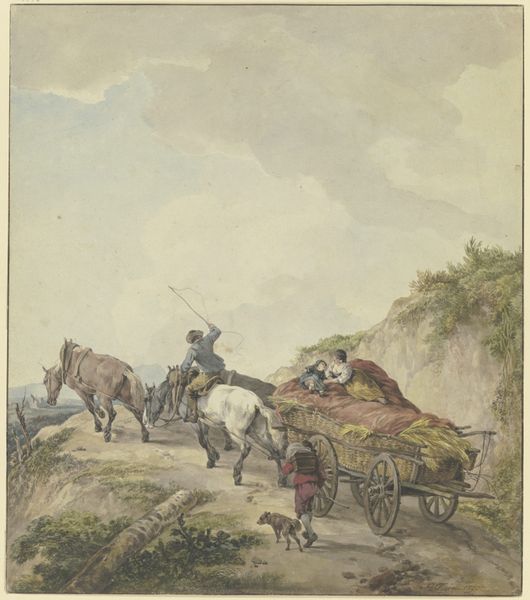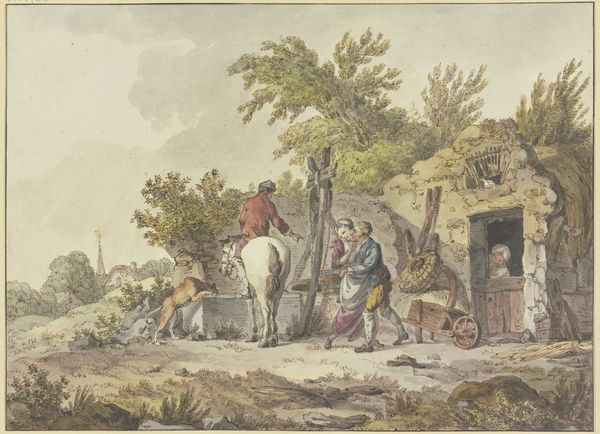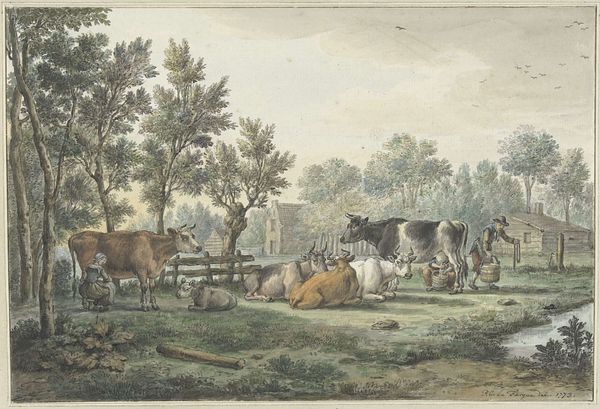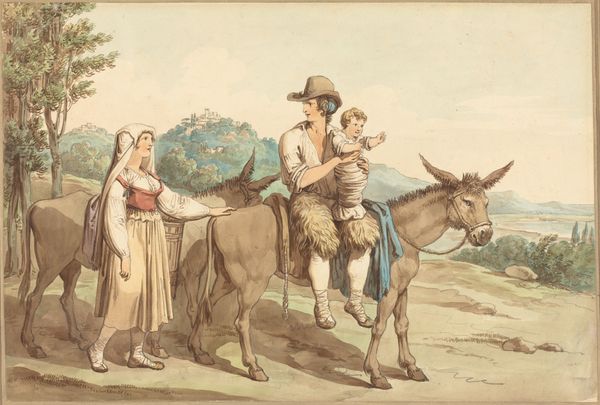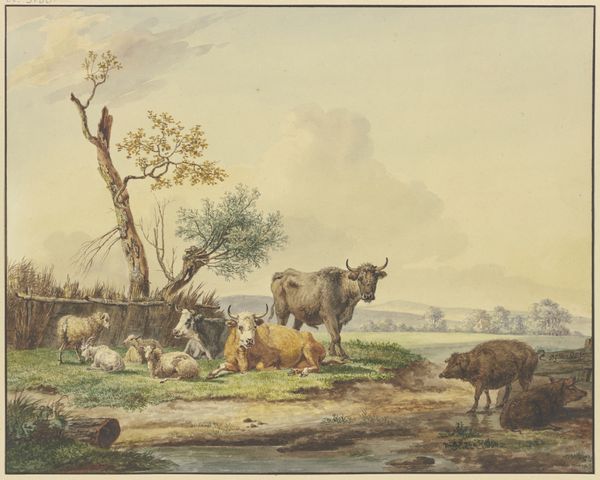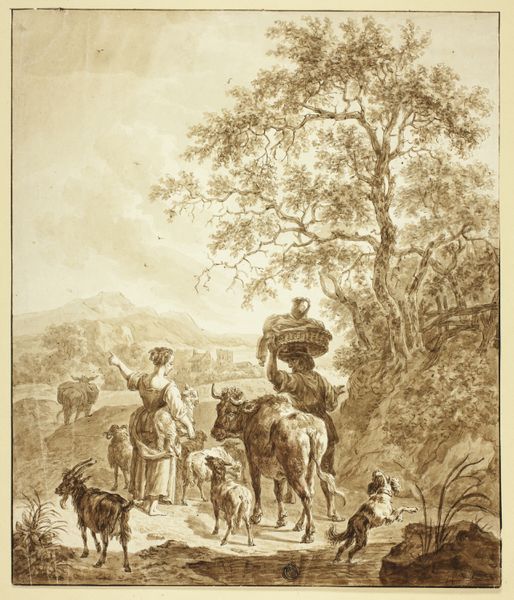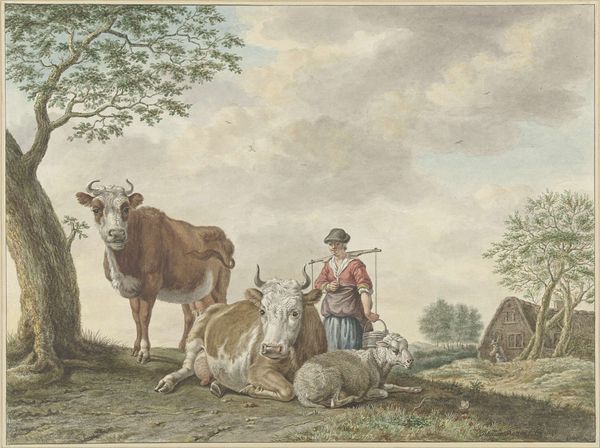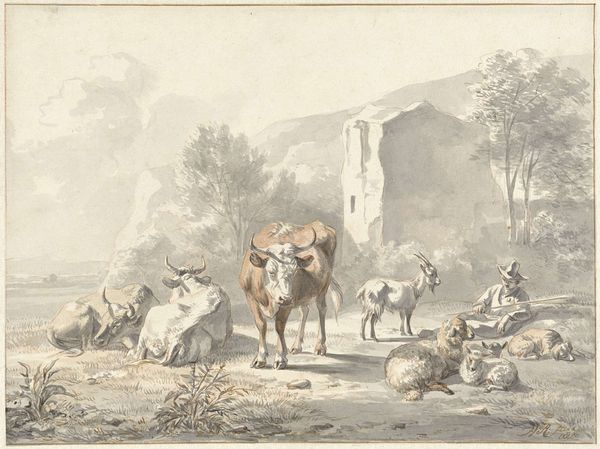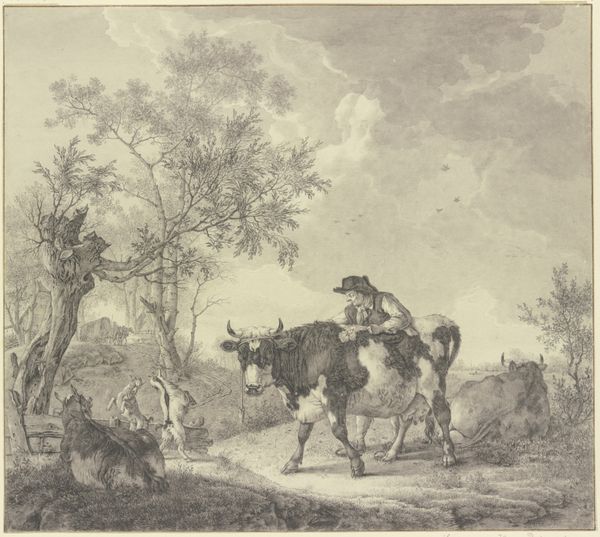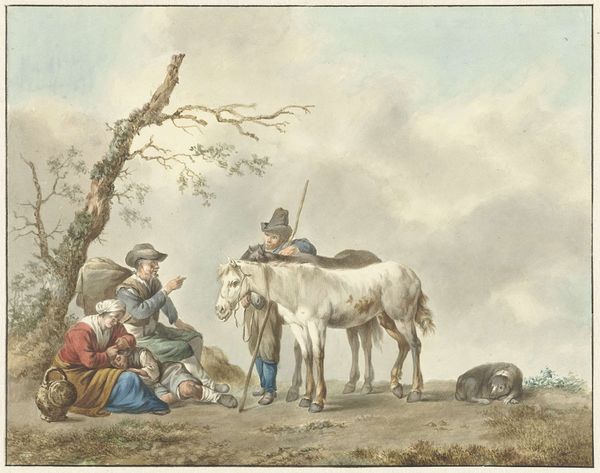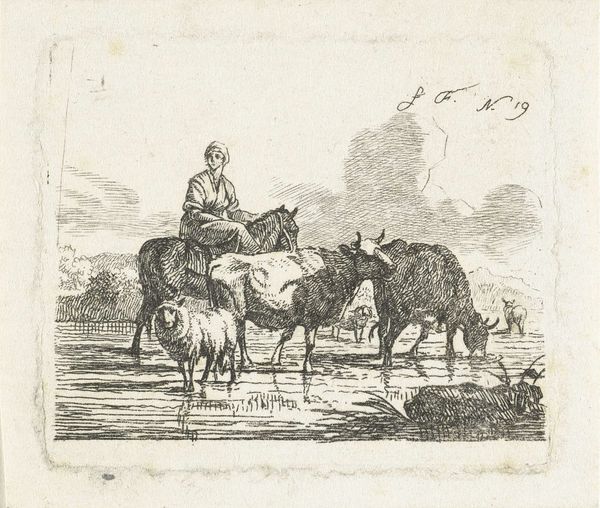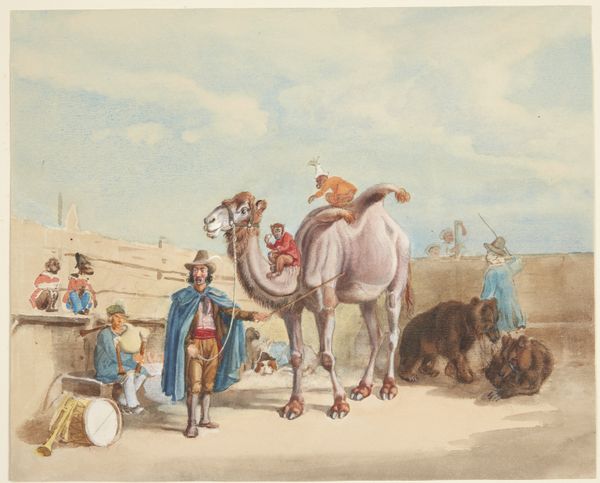
Hirten fahren mit einem Wagen durchs Wasser, rechts eine Hirtin, die sich die Füße wäscht, bei einer weißen Kuh
0:00
0:00
drawing, coloured-pencil
#
drawing
#
toned paper
#
coloured-pencil
#
baroque
#
landscape
#
coloured pencil
#
genre-painting
#
watercolor
Copyright: Public Domain
Curator: Here we have an artwork attributed to Aert Schouman, tellingly titled "Herdsmen driving a wagon through the water; on the right a shepherdess washing her feet near a white cow." Editor: Immediately, I am drawn to the subtle way the watercolor blends into the toned paper—there is a hazy atmosphere in this genre scene, a very pleasing, dreamlike quality. The white cow stands out as a point of focus, an oasis of calm in a lively rustic tableau. Curator: Considering Schouman's Baroque sensibilities, note how the materiality is integral. The toned paper would have functioned not merely as a support but as a compositional element. Its subtle hues contribute to that very mood you noticed. He used coloured pencils too, in service to the narrative—depicting rural life, and thus a specific social strata, with attention to detail. Editor: I find the overall composition compelling—the arrangement feels so balanced, doesn't it? You have that covered wagon being drawn across the water offset against the restful scene of the shepherdess tending to the animals in the foreground. They balance each other! Curator: This is what fascinates me, because it allows a deep understanding about art's place within broader social contexts. Genre paintings were particularly valued in 18th century Europe for their appeal to the emerging middle class. I can almost feel the grit, the muck—an appeal to "authenticity", which always, invariably, omits the unseen laborers in paper manufacture, pigment creation. The pastoral illusion! Editor: That is so true. But perhaps there is an appeal beyond authenticity, I feel... This could very well be a sentimental image that reflects a deeper human longing for connection to nature. Even the slight blur of the medium adds to this feeling, like a gauzy filter on memory. It’s a fleeting moment of shared harmony that resonates on a subconscious level. Curator: Absolutely, and I must agree that the appeal is partly driven by a romanticized, imagined vision, that this "harmony" obscures complex class dynamics! Art provides powerful narratives of consumption, doesn't it? The paper, the pencil, are conduits... Editor: In the end, though, both approaches highlight the emotional depth, or shall we say the complex emotional production, of the scene. Curator: Exactly. Each element contributes to this carefully constructed narrative, and it also offers insight into our human yearning to engage with such crafted, materially grounded art pieces.
Comments
No comments
Be the first to comment and join the conversation on the ultimate creative platform.
